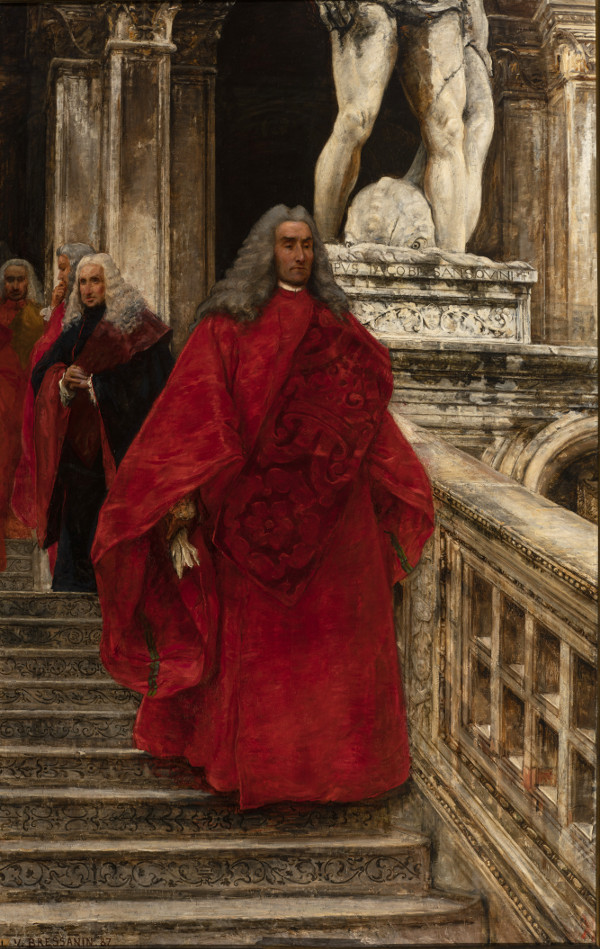Venice, Doge’s Palace
Sala della Quarantia Civil Vecchia
From 3 May 2023
The Ospiti a Palazzo (Guests at the Palace) series of exhibitions, inaugurated with the masterpiece Maria Maddalena in estasi by Artemisia Gentileschi, will continue in 2023 with a public display of paintings that exalt the role of Venice and its major figures in European history and culture.
 From 3 May, on display in the Sala della Quarantia Civil Vecchia di Palazzo Ducale The Last Senate of the Republic of Venice, made by Vittorio Emanuele Bressanin (Musile di Piave, 1860 – Venezia, 1941).
From 3 May, on display in the Sala della Quarantia Civil Vecchia di Palazzo Ducale The Last Senate of the Republic of Venice, made by Vittorio Emanuele Bressanin (Musile di Piave, 1860 – Venezia, 1941).
On May 12, 1797, with Napoleon’s troops lined up for an attack on the shores of the lagoon, the Great Council of Venice met for the last time and abdicated in favour of a revolutionary government controlled by the French military command.
On May 15, 1797, the last doge Ludovico Manin left the Palazzo Ducale forever. That was how the thousand-year old history of the Republic of Venice ended.
Ninety years later, in 1887, Vittorio Bressanin wished to convey the powerful meaning of those events with this painting.
An elderly senator descends the Giants’ Staircase in the Palazzo Ducale. His heavy steps and lowered gaze show dignity and resignation. The old-fashioned wig and the famous red gown, which distinguished the magistrates of the Pregadi (the members of the Venetian senate) from all the other patricians of Venice, now belonged to a bygone era, the agony of which can be felt in the contrast between the external pomp and the historical reality.
In the interpretation of the nineteenth-century painter, we do not read decadence, but a reflection on the intimate drama stoically experienced by the magistrate, who here becomes a symbol of the entire city.